 Ten Year Pin Awards

In November 2019, the IMN State Advisory Council decided to start awarding a pin to recognize 10 years of Advanced IMN Service. The plan was to announce the pin and its first group of recipients at the 2020 State Gathering. Unfortunately, the State Gathering didn’t happen. The pins may be presented at the 2021 State Gathering, or mailed to recipients if the 2021 State Gathering does not happen.
The pin recognizes 10 years of recorded volunteer service, and records for Advanced Service began in 2010. To determine who had completed the necessary 10 years of service took quite a few hours of work. There were ten individual spreadsheets, one for each year from 2010 to 2019, that needed to be consolidated into one master list with each individual’s annual volunteer history. To complicate the issue, the Excel sheets were recorded alphabetically by first name. Over that period 592 individuals reported Advanced IMN hours, totaling just over 1,600 entries.
After all the lists had been combined, there were 25 individuals with the number of years required to receive the 10-year pin, and another 14 individuals who will qualify for the pin in 2021, provided they submit their hours for 2020. The list of eligible individuals continues to grow for future awards. It isn’t necessary to pay the $10 for the Advanced pin and certificate to get on the 10-year recognition list, but it is necessary to submit your hours. So, if you haven’t already done so, get those hours sent in.
The following will receive an Advanced 10-Year pin, based on their total volunteer service: Jane Archer (Sellersburg), James Beversdorf (Valparaiso), David Boylan (Fort Wayne), Janice Cain (Colfax), Mary Davis (Elkhart), Judy Ferrell (Elkhart), Peggy Foster (Valparaiso), Patty Fowler (South Bend), Susan Gerhart (Indianapolis), Pam George (Fort Wayne), Debbie Goedde (Evansville), Julie Henricks (Ossian), Jackie Horn (Plainfield), Connie Kingman (Rensselaer), Colletta Kosiba (Brownsburg), Carole Mitchell (Goshen), Kay Musgrave (Fort Wayne), Jeff Ormiston (Fort Wayne), Cynthia Powers (Roanoke), Judy Smith (Auburn), Donna Streeter (Fort Wayne), Deanna Vasquez (Auburn), Emilio Vasquez (Auburn), Russ Voorhees (Fort Wayne).
The State Council wishes to congratulate and thank these 25 IMNs, and we look forward to awarding more Advanced 10-Year pins in future years.
Any IMN who would like to check their status of accumulated years should contact Chuck Harvuot, State Council President, at crharvuot@gmail.com, or Jody Heaston, Volunteer and Indiana Master Naturalist Coordinator, at jheaston@dnr.IN.gov.
|


On a hot, humid September morning in 2018, a small group of people arrived at Shirley Heinze Land Trust’s Meadowbrook Nature Preserve in Valparaiso for a volunteer workday. The project for the day was to remove rusty screws and nails from the salvaged lumber of a dilapidated staircase that had been torn down a few weeks before. The plan was to repurpose the lumber into Leopold benches for the preserves.
It was on that day that one of those volunteers, Maureen Kolbusz, jumped into volunteering with Shirley Heinze with enthusiasm and heart! She had just retired from a full-time career in nursing, and finally had the time to pursue her interests, which included taking the class to become a certified Indiana Master Naturalist. That class led her to Shirley Heinze Land Trust. Looking for opportunities to perform volunteer service to complete her certification, she saw a post about Saw Whet Owl Banding at Meadowbrook. She decided to check it out, and has been volunteering regularly since then.
|
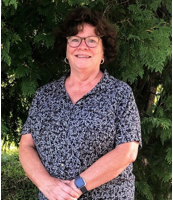
Maureen has shared over 300 hours of her time on various projects. Her impact includes removing rusty nails from salvaged lumber; collecting, cleaning, and planting native wildflower seeds; weeding and beautifying the gardens at Meadowbrook; removing invasive species, tree tubes, and litter; restoring the greenhouse at Barker Woods; cleaning the lodge for special events and doing office work; leading Volunteer Workdays; becoming a Preserve Steward at Ambler Flatwoods and engaging new Adopt-A-Trail volunteers. Her dedication to nature and the organization has been resolute!
This fall, Maureen was honored with Shirley Heinze Land Trust’s Volunteer of the Year award.
“Not only did Meadowbrook open the door to new friends and knowledge, it is like a family. People are there because they want to be there,” Kolbusz said. “They want to help; they want to see the fruits of their labor. They feel the beauty there, and there is a friendly warmth that embraces everyone. Shirley Heinze is growing, and growing, and continues to include and recognize volunteers, even during this unusual year. They make sure everyone is safe. That’s what a family does, isn’t it?”
We are grateful for volunteers like Maureen. If you, too, would like to join the Shirley Heinze family of volunteers, please fill out the Volunteer Application on our website at heinzetrust.org/volunteer or email Volunteer Coordinator Christine Maloney at cmaloney@heinzetrust.org. While the current health situation is preventing us from group and in-person gatherings, we will be hosting an online Volunteer Callout on Jan. 20 at 6:30 p.m. to share safe and meaningful ways you can volunteer with Shirley Heinze Land Trust.
|
 2020 has certainly presented some unique challenges for everyone. Many of the educational and volunteer service activities which I have previously participated in to complete the Advanced Master Naturalist requirements were cancelled. However, through the use of the DNR website at calendar.dnr.IN.gov, I was able to find many other interesting opportunities throughout the state.
In late May I traveled to Hardy Lake for a program regarding an introduction to bird watching. Recent rains had left the trails very muddy, and the birds weren’t particularly cooperative, but the naturalist presented a very interesting program nevertheless.
The Falls of the Ohio presented a series of lectures and tours about the falls area, presented by Alan Goldstein, which I attended over the course of three Saturdays in late July and early August. Goldstein is a polished speaker and was quite interesting. The park also has a very nice museum, interpretive center, and theater which is well worth the time. The Falls of the Ohio Park is also the origination point of the Lewis and Clark expedition. During my visit there the National Park Service had an historical reenactor who presented a program entitled “Mother of York.” York was a slave who participated in the Lewis and Clark expedition. The program was quite moving and very well done.
Tippecanoe River State Park had planned some volunteer activities for National Trails Day in June which had to be cancelled. Amanda Hinkel at the park did ask for some help cleaning up the trails instead. I was able to spend most of the day on the trails of this park, which actually had very little trash to pick up, but certainly had some interesting natural features.
Turkey Run State Park also asked for volunteers to pick up trash on National Public Lands Day in October. The folks at the park said that they had an extra busy summer, and it certainly showed. There were quite a few people volunteering that day, and an awful lot of trash.
Later in the summer, The Friends of Versailles State Park asked for assistance to staff the nature center at the park in August, September, and October. The nature center there is very well done with both live and static displays. I volunteered for four Sunday afternoons. Most of my time there was spent welcoming visitors, feeding Red the Turtle (who is the resident celebrity), answering questions as best I could, and distributing literature. I also tried to allow some time each day for cleaning and sanitizing the area.
All in all, I have found the Indiana Master Naturalist program to be quite rewarding. In retrospect, I believe the challenges presented this year have given me the opportunity to explore some new areas I might not have taken advantage of otherwise.

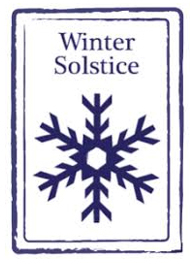
It’s mid-December and the winter solstice is upon us, so the days will slowly begin to become longer and the nights shorter. And even though the days start to get longer, the temperatures will become colder. Typically, the two coldest months follow the winter solstice. The word, solstice, is derived from the Latin ‘sol’ and ‘sistere’ and means ‘sun standing still.’ I decided I wanted to learn more about solstice and found several interesting facts:
• If you were to photograph the sun at the same exact time every day, for 365 days, it traces out a shape known as the analemma, which looks like a figure 8.
• While most people consider the whole day as the winter solstice, it is actually the specific moment when the Sun is exactly over the Tropic of Capricorn.
• The winter Solstice can happen on Dec. 20, 21, 22, or 23, although Dec. 20 or 23 solstices are rare.
• Observers within the Arctic/Antarctic circle on the solstice will either see 0 or 24 hours of sunlight.
• Solstices have been used throughout history to time many important events each year, including the sowing of seeds for crops, harvesting of crops, and monitoring the reserves of winter food.
If any of this means we’ll get more snow this year so I can get out my cross country skis and actually get to use them, I’ll be grateful.
Here’s wishing you all a happy holiday season and a better new year.
Your IMN Council President,
|

Meet your IMN State Council
The IMN State Advisory Council meets quarterly and is comprised wildlife professionals and at least four Certified Indiana Master Naturalist alumni. Employees of each of these sponsoring organizations help comprise it: The Indiana Resource Conservation & Development Councils, Indiana Soil and Water Conservation Districts, Purdue University Cooperative Extension Service, the Indiana Department of Natural Resources, and county and/or city parks and recreational programs. The State Council sets standards for the IMN programs offered throughout the state and approves program applications. Jody Heaston is the IMN coordinator, but technically not a member of the council. Here are your current State Council members:
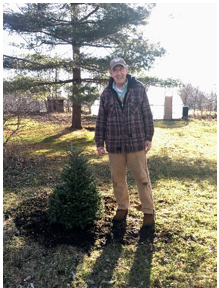
I am Pardee Gunter, a retired teacher and school administrator of 44 years. I am a graduate of the Elkhart County IMN class of 2014 and have received six Advanced Master Naturalist certificates since then. I am also a bronze level Indiana Master Gardener. I am one of six founders of the Kosciusko County IMN program and am still serving on the steering committee to plan and oversee that workshop. I have been a CoCoRaHS volunteer for the National Weather Service for 13 years. I am an instructor at Washington STEM Academy in the National Archery in Schools Program, a program for sixth graders sponsored by the DNR. I am a member of the Tippecanoe Audubon Society and South Bend/Elkhart Audubon Society. I am the head gardener at the Warsaw Biblical Gardens and have been so for 11 years. I enjoy cycling, gardening, birding, writing, and just being outdoors.
|

Phillip Cox serves as the Purdue Extension Agriculture & Natural Resources Educator for Vermillion County. He has hosted five IMN Workshops and is excited to host more. He provides local Purdue Extension educational programming, and focuses on topics that include pesticide safety, native plants, invasive species, pollinator conservation, wildlife management, forestry, the Master Gardener Program, and the Indiana Small Farm Conference. He is also an active member of the Ouabache Land Conservancy, Wabash Valley Audubon Society, Vermillion Trails Alliance, Wabash River Heritage Corridor Commission, Indiana Invasive Plant Advisory Committee, and Hoosier Outdoor Writers.
|
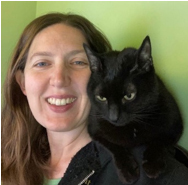
My name is Gina Anderson, and I’m the Agriculture and Natural Resources Extension/Community Development Extension Educator in Floyd County. I have been in this role since May 2013. I graduated from Purdue University in 2009 with a B.S. in Horticulture Production and Marketing and a minor in Natural Resources and Environmental Science. After graduation, I worked in the landscape industry while completing my M.S. in Agriculture Education from North Carolina A&T University. I restarted the Master Naturalist program in 2015 with almost 30 attendees. Because we have a very popular Master Gardener program, the MN program is offered every other year. Our most recent class was offered with Purdue Extension Harrison County. This was a great way for us to allow the two classes to network. When I’m not working with clients, I am usually outside in my own yard working on my native planting and pollinator patch, or I am working on my ballroom dancing routines.
|
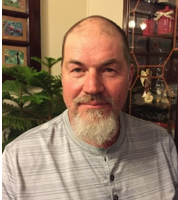
Bill Spurlin grew up on a farm in Sullivan County. After moving to Ohio and Kentucky during his career as a machinist, he returned to his hometown in 2002. In returning to his roots, Spurlin Homestead Farm was born. In addition to having a large garden, fruit trees, grape vines, blackberry vines, meat rabbits, chickens, sheep, a variety of herbs and bees are raised on the farm. Bill and his wife are vendors at their local farmer’s market, and they serve on its board of directors. Bill is an advanced Indiana Master Naturalist (IMN) and is the Program Coordinator for the Sullivan County IMN, a Jump Start Program Committee Member for the Indiana State Beekeepers Association, and an avid survivalist teaching survival skills classes. He works for the Indiana DNR as Maintenance Foreman at the Greene Sullivan State Forest. Bill can be reached through his Spurlin Homestead Farm Facebook page, or by email at bspurlin@juno.com.
|
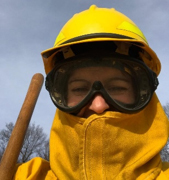
Natalie Haley is the Park and Education Manager for Fox Island County Park in Fort Wayne. She has a Bachelor of Science degree from Purdue University in Wildlife Science/ She has worked as a seasonal naturalist for Indiana’s Department of Natural Resources at both McCormick’s Creek State Park and Raccoon Lake State Recreation Area. As a student, she worked for Purdue University as a laboratory and field technician assistant, completed a volunteer internship at Brookfield Zoo, and volunteered for CHAPS (a children's therapy program using horses). Following her husband’s transfer to Spooner, Wisconsin, Natalie founded a family “nature niche” program in Spooner’s Family Resource Center and found part-time work as an environmental educator and Program Director Interim at Hunt Hill Audubon Sanctuary in Sarona, Wisconsin. When her husband was transferred back home to Indiana (Fort Wayne) in 2005, Natalie and her family settled down in Auburn with plans of working again for Indiana’s state parks. Instead, Natalie found the Allen County Park. Natalie still lives in Auburn and commutes to Fort Wayne to share her love of environmental education. She volunteered for Soarin' Hawk Raptor Rehab and was key in helping them develop their programming requirements. She became an Indiana Master Naturalist (IMN) graduate while working for Allen County Parks and soon volunteered on the IMN Advisory Council, where she still serves today. Natalie also served on the Environmental Educator Association of Indiana's (EEAI) board where she helped develop state-mandated requirements for environmental literacy within Indiana's state department of education standards. Natalie is a Certified Interpretive Guide, a Leopold Education Project facilitator, and host for GoFishIN, Project WILD, Project Learning Tree, Growing Up Wild, and Flying Wild teacher workshops. She also runs monthly Home School, Preschool and public programs year-round. School field-trips are on hold due to COVID, so Natalie has kept busy with park structural improvement projects and writing new curriculum for the parks. She hopes to increase the amount of teacher workshops provided and become active on the IMN Advisory Council, EEAI, and Soarin' Hawk boards in the near future.
|
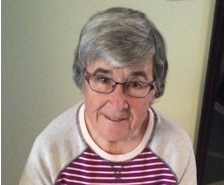
Mary Davis is a retired attorney. She and her husband of 53 years practiced law together for 30 of those years as Davis & Davis. She grew up in Southport, and after graduating from Southport High School attended Indiana University in Bloomington, graduating in 1970 and then attended and graduated from law school at the University of Illinois. She met and married Rick while a student at Bloomington and they subsequently moved to his hometown of Elkhart. After becoming a Master Gardener, she became interested in the Master Naturalist program and loved the training so much that she convinced her husband to complete the program also. In addition to serving on the State Council, she helped plan the Gathering when hosted by Elkhart. She and her husband and their 7-year-old rescue dog Lily (a French bulldog/English bulldog mix) live immediately adjacent to Boot Lake Nature Preserve where all three of them love to walk. Since retiring, she and husband (and Lily) have become snow birds, with a winter home in Florida. She has attended several educational events there and hopes to do Master Naturalist training there if the pandemic ever ends. She loves to read, do counted cross stitch and quilting. She also loves music and is learning to play the concert harp and the dulcimer. She and husband ride a tandem bicycle and have logged over 60,000 miles, 3,360 this year.
|
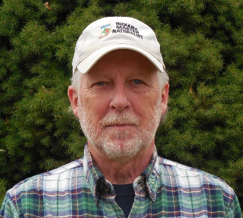
Chuck Harvuot - I completed the IMN class in Elkhart County, became certified in 2012, and served as Chairman of the ECIMN Alumni group for five years. I’m located in Warsaw. I was a founding member of the Steering Committee for the Kosciusko County IMN program and have served since 2015. I joined the State Advisory Council in 2018, and am currently its president. Most of my volunteer activities involve environmental education programs for elementary school children. I am an avid reader, a licensed IHSAA basketball and soccer official. I enjoy hiking, biking, cross-country skiing, nature photography and promoting the IMN program.
|
Elma Chapman retired after 40 years of teaching French and German in middle and high school and took the IMN class at Ft. Wayne to further her lifelong interest in nature. After graduating she joined the Elkhart County IMN Alumni to stay active with the program. Her interests are bicycling, canoeing, kayaking, hiking, cross-country skiing and travel. She is the current state IMN newsletter editor. She lives in Middlebury. |
|
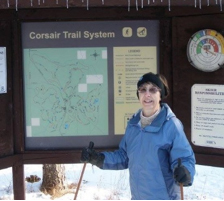 |

I’m Cookie Ferguson. I grew up in the southwestern corner of Michigan where I taught middle school for 30 years. After I retired from teaching, my husband and I started visiting the Indiana state parks. They have a pin program where you go to the park, hike a trail, volunteer for at least an hour (I’ve filled many bags of trash from many parks), and answer some questions. Then you get a pin unique for that park. There are 35 pins and I have them all. During this adventure one of the seasonal interpreters suggested the IMN program. I’d never heard of it. I looked it up online and we took the class in 2011. By 2012 I needed hours and began volunteering at the Indiana Dunes State Park. That year I was Volunteer of the Year! I continued volunteering there, running their summer camps, learning to bird, and really appreciate the state park system. I attended the DNR interpreter training classes first as a student, then a volunteer, and finally as a presenter. From this experience I was able to write the guidelines for the IMN Interpretive handbook. In 2018, I coordinated the IMN Gathering at the Indiana Dunes, a highlight of which was the Owl Net banding program: attendees really got to see these cute owls and learn about the process. We just finished the Owl Net project this year where we captured and banded 114 saw-whet owls.
|

Caitlin Stahl is the naturalist at Southeastway Park. She has been involved with hosting IMN since 2015 and was happy to join the IMN board in 2020! She has worked at local, state, and federal parks, but finds herself most at home working in smaller communities. Her work has placed her in Utah, Philadelphia, and Ohio, but she is happy to back in Indianapolis where she grew up. She loves all aspects of nature and strives to help people understand and appreciate the less-appreciated critters – namely spiders and bugs! She attended IU Bloomington and has a degree in Outdoor Recreation, Parks, and Human Ecology.
|
Sandhill Cranes
by Mary Davis, IMN Council Member

Two years ago, Jordan asked me what my favorite bird was. I replied without hesitation the sandhill crane. (Fortunately, she did not ask my husband, who said he would have told her the parakeet!) Ever since we built our house 13 years ago adjacent to Boot Lake Nature Preserve in Elkhart County, I have loved hearing the calls of the sandhills. When we rented a condominium five years ago in Kissimmee, Florida for two months, I saw them for the first time close up. The birds in Florida were quite friendly, especially to tourists bearing food (preferably grain). Three years ago we rented a house in The Villages (and much to our surprise, came back owning a winter home there) and again saw many sandhills. I knew many of them migrated from our area and other northern states but didn’t know much else about our neighbors, so I was delighted when a local Audubon group hosted a representative from the state wildlife agency to give a talk on sandhills. There I learned that there are actually several subspecies of sandhills.
The common sandhills we see locally are the largest group and number in the hundreds of thousands. There is another subspecies, the Florida sandhills which look very much like ours. The best way for non-experts to tell them apart is to see them in the spring—if they have baby sandhills in tow, they are locals, as the migratory ones wait till they come back in the spring to breed. Sandhills cannot roost in trees, as their rear talons do not bend. (If you ever hear someone say they saw a sandhill in a tree, they are mistaken.) As a result, their nests are on ground. They like marshy, wetland areas with grasses that can obscure their nests. We have seen male sandhills standing lookout in Boot Lake. I am sure there are nests on the marshy patches of ground in the lake. They usually have two eggs in a nest (kind of like the royals: an heir and a spare). Mom and dad take turns sitting on the eggs, so the other one can hunt for food during the day, usually in 45-minute to one hour turns, but at night mom tends to take over. The babies (called chicks or colts) are able to leave the nest immediately, which is important so that mom and dad can keep an eye on them and protect them from predators. They are kind of at the top of the bird population, size-wise. In Florida their main predators are alligators and Florida panthers, although raccoons like to raid their nests for eggs. The speaker at the talk we attended told of one case where an eagle swooped in and snatched one baby chick.
A couple of days later, he came back with his eye on the remaining chick but as he swooped in, he was attacked by two very angry parents. Not only was the baby spared, the eagle had to be taken to a wildlife specialist to recover! Popular belief is that sandhills mate for life, and for the most part this is true, although our speaker indicated if a pair fails to reproduce for several years, they may separate and seek other mates. He also told of a Village sandhill who lost a mate to an alligator and an Orlando sandhill who also had lost a mate. To the wildlife experts these birds didn’t even know each other, but within a month of the second bird becoming mateless, they were together! The babies stay with their parents for almost a year, until they are ready to start a new family. Then groups of adolescents kind of hang out together for a few years, until they start mating up and moving out.
|

Of course, one of the most distinguishing features of the sandhills is a large red patch on their head—I always assumed they were red feathers, but I was wrong. It is actually bare skin with blood vessels just below the surface giving it the red color. Of course, the other feature (and the one I had first identified) is their very unusual call. Actually, the male and female each have a separate sound and the two combined is what makes that distinctive sound. Recently, while riding our tandem, we saw two sandhills flying overhead and could easily discern their separate notes contributing to their call.
Another behavior often seen is dancing. It’s not a mating dance, according to our expert, but more just social behavior. He had videos of the same. Now here, I have to have a different opinion. I saw two sandhills one morning as I was leaving our subdivision. . . one was dancing and flapping his wings all over the road while the female (I am sure) stood impassively watching. This went on for several minutes, but he must have done all right because at the end, they flew off together. (This dance was very similar to behavior of two turkeys in our neighbor’s yard, who were definitely doing a courting dance. At the end, they too went off in the woods together).
Despite the relatively high mortality rate (which is still above replacement and they obviously have several years of reproduction), sandhills are in no danger of diminishing or disappearing. After returning home I read an article from someone who went to a marsh in Nebraska where thousands of migrating sandhills visit each spring. Apparently one can rent a rustic cabin there and see the birds in the early morning hours. . . Now, I love my sandhills, but a rustic cabin in a marsh in early spring or my house here or in Florida looking out the window? It really isn’t a close race. (Rick has not spotted any parakeets.) If you want to see sandhills around here, they are frequently at Boot Lake or the surrounding fields.
|
CoCoRaHS
by Pardee Gunter, IMN Council Member
“Everybody talks about the weather, but nobody does anything about it.” I’ve heard this quotation, generally attributed to Mark Twain, most of my life. There is now something you CAN do about it. The National Weather Service started a citizen science program called CoCoRaHS 22 years ago. CoCoRaHS stands for Community Collaborative Rain, Hail & Snow network. This is a volunteer activity that happens on a daily basis. In a nutshell, it is making daily observations of weather conditions in your backyard and sending them to the National Weather Service. This provides not only valuable information for the National Weather Service, but also a number of groups of people including local TV and radio stations. The program has grown to nearly 20,000 volunteers. I have been a volunteer for about 15 years. There are many other optional weather activities that can be done besides the daily observations. One nice side benefit is that the time you spend doing your daily observations are considered IMN volunteer hours!
If you are interested in the program, check out the official website at cocorahs.org. Here you will find a plethora of information about the program and other weather-related citizen science activities available through the CoCoRaHS network. If you have further questions or would like to be a volunteer, there is a link to an application on the official website, or email me, pardeeg@gmail.com, and I can answer questions and/or get you in touch with someone at the National Weather Service headquarters in our area.
Below is a screen shot of the CoCoRaHS map for Dec. 10, 2020. Each dot represents a person’s observation for this date.

Bluebirds in Indiana
by Marty Mullin, Advanced IMN

In 2002 an environmental organization in Franklin County decided to start a bluebird trail. Why? Bluebirds had declined since the introduction of the house sparrow and starling in the 1880s. Later, the use of pesticides as well as the fact that dead trees and wooden fence posts were being removed also contributed to their decline. Bluebirds are cavity nesters, so people began constructing boxes to encourage the birds to nest in them. Having nest boxes has helped, but they need to be monitored.
A bluebird trail consists of nest boxes spaced the correct distance apart along an area that is open yet close to trees. We were able to get in touch with a wonderful couple who had several bluebird trials in Indiana and Ohio, Lum and Miriam Bourne. They joined some of our planning meetings and took us out on one of their trails. They also showed us wonderful photographs and helped us become even more enthusiastic about our project. We applied and received a grant from the Franklin County Community Foundation with which we purchased wood to make nest boxes. We contacted the industrial arts teacher at the high school and were able to get high school students involved in making some boxes.
Lum and Miriam were members of the Indiana Bluebird Society and invited some of us to a meeting. My husband and I became members. Between Lum, Miriam and the IN Bluebird Society, we learned the correct way to erect boxes, add baffles to deter raccoons and snakes from crawling up into the boxes, how to monitor the boxes, and how to keep data on the weekly checks from the end of March into the fall of the year.
In the fall of 2020, we finished our 18th year of monitoring boxes in Franklin County, which started with 65 boxes in three areas and is now 108 boxes in nine areas in the county. There are now six of us who monitor these boxes. I collect the data from the monitors, add up numbers of eggs laid, successful nests, number of birds that fledge, etc. and send the information to the IN Bluebird Society.
The IN Bluebird Society has a group of people scattered around the state who are coordinators for counties that have people monitoring bluebird boxes. The group has yearly meetings with speakers and time to share information about monitoring boxes, as well as up to date information about boxes and keeping sparrows out of them. There is also a newsletter that is sent out to members. The website for the IN Bluebird Society is at Indianabluebirdsociety.org, where there are links to the North American Bluebird Society and Sialis with very good information for type of boxes, proper spacing between boxes, photos of birds and eggs that you may find in a box, how to monitor boxes, what birds, like tree swallows and chickadees, are OK to keep in the box , and ways to try to keep sparrows out of boxes, etc.
I encourage you to become a member of the IN Bluebird Society and/or the North American Bluebird Society. I encourage you to put up a bluebird box and monitor it. Watching eggs hatch, the youngsters grow, and then fly away is very rewarding. If you have questions, I can try to answer them at mullinmarty@gmail.com.
|
Whooping Crane Conservation in Indiana
by Phil Cox, IMN Council Member
Worldwide there are 15 species of cranes, including two species that are native to North America. These two species, sandhill and whooping, can be found in Indiana while migrating through and sometimes staying for an extended period during fall and winter. Sandhill cranes are the most common species of cranes in the world with an estimated population of 827,000, while whooping cranes (nicknamed because of their distinctive whooping call) are the rarest with only 826 total (159 of those in captivity). The 667 wild “whoopers” consist of 504 that migrate from Canada to Texas (western flock), 69 non-migratory in Louisiana, nine non-migratory in Florida, and finally 85 (approximately equal number of both sexes) that make-up the Eastern Migratory Population.
The eastern population sometimes over-winters and thus may be spotted in Indiana since their reintroduction in 2001. This population rebound is quite amazing, since there were only 16 total in 1941 as a consequence of hunting and specimen collection, human disturbance, and conversion of the primary nesting habitat to hay, pastureland, and grain production. In mid-December 2020, at least 29 “whoopers” were documented in Indiana – 20 at Goose Pond Fish & Wildlife Area. Historically, they have been documented to stop over for several days in flyway counties to forage for grain on their way south. To see where the eastern population of “whoopers” have been documented in the last two months see map.bringbackthecranes.org/.
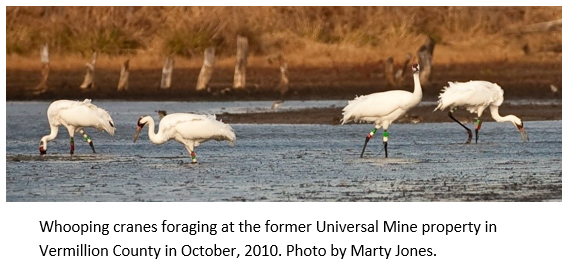 |
According to Lizzie Condon, the International Crane Foundation’s Whooping Crane Outreach Coordinator, “The eastern migratory population of whooping cranes is still struggling to become self-sustaining, and shootings account for 19 percent of known mortality. This is a long-lived species with a low reproductive rate, and we really need to reduce the shooting rate to help this population flourish. People can help protect whooping cranes from shootings by being able to correctly identify one, sharing information about whooping cranes with their friends and neighbors, and reporting people who are harming or harassing whooping cranes.”
Identification is fairly easy, as whooping cranes are the tallest bird native to North America, growing to 5 feet in stature – with a wingspan of about 7.5 feet and weighing 15 pounds when full-grown. The adults are snow white with a red crown and black moustache. When in flight you can easily see the stark contrast of their black wing tips cutting through the sky with their straight long necks and black thin legs and feet straight behind. When in Indiana, whooping cranes will flock together in small groups of about two to six. Sometimes they will be seen singly with a large flock of sandhill cranes like at Jasper-Pulaski Fish & Wildlife Area in northern Indiana.
Once you are fairly confident that you have seen a whooping crane, you can help species recovery by reporting your sighting online to the International Crane Foundation at savingcranes.org/report-Whooping-crane/. You will be asked to provide the location, date, time, color leg-band combination, and photo if available. Alternatively, you can email cranereport@savingcranes.org with location information. The provided information will be invaluable for keeping track of individual “whoopers” and further the conservation of their species. Some whooping crane etiquette (from the Eastern Whooping Crane Partnership) is as follows: If you encounter a whooping crane in the wild, please give them the respect and distance they need. Do not approach birds on foot within 200 yards; remain in your vehicle; do not approach in a vehicle any closer than 100 yards. Also, please remain concealed and do not speak loudly enough that the birds can hear you. Finally, do not trespass on private property in an attempt to view or photograph whooping cranes.
In addition, since illegal shooting remains one of the biggest threats facing wild whooping cranes you can proactively educate people that shooting whooping cranes is illegal and is extremely detrimental to the recovery of this endangered species. Since 1967, when the cranes were declared federally endangered, 43 have been shot – including five in Indiana. So please report any suspicious activity that appears to harm or disturb a whooping crane by contacting the Indiana Department of Natural Resources TIP (Turn in a Poacher) Hotline at 1-800-TIP-IDNR or dnr.IN.gov/lawenfor/7608.htm. TIP, Inc. is a non-profit conservation organization that works hand-in-hand with Indiana DNR Law Enforcement to protect Indiana’s fish and wildlife resources by increasing public support and involvement in bringing poachers of fish, wildlife and endangered species to justice. You will receive a reward if your TIP leads to an arrest or you can remain anonymous. For more information see: dnr.IN.gov/lawenfor/2745.htm.
In summary, Condon says, “Whooping cranes have an incredible conservation history. Through the hard work of conservationists at state and federal agencies and non-profits, the species is still with us, with over 650 in the wild today. But we need help from people who share their landscapes to keep Whooping Cranes safe in Indiana.” For more details about crane conservation please refer to the International Crane Foundation’s website at savingcranes.org. Together we human species can not only help save whooping cranes from extinction, but also Indiana’s other feathered and finned and furry fauna that we are caretakers for.
 The Indiana Master Naturalist program is sponsored by the Resource Conservation & Development Councils, Indiana Soil & Water Conservation Districts, Purdue Cooperative Extension Service and Indiana Department of Natural Resources. More information available at Indianamasternaturalist.org.
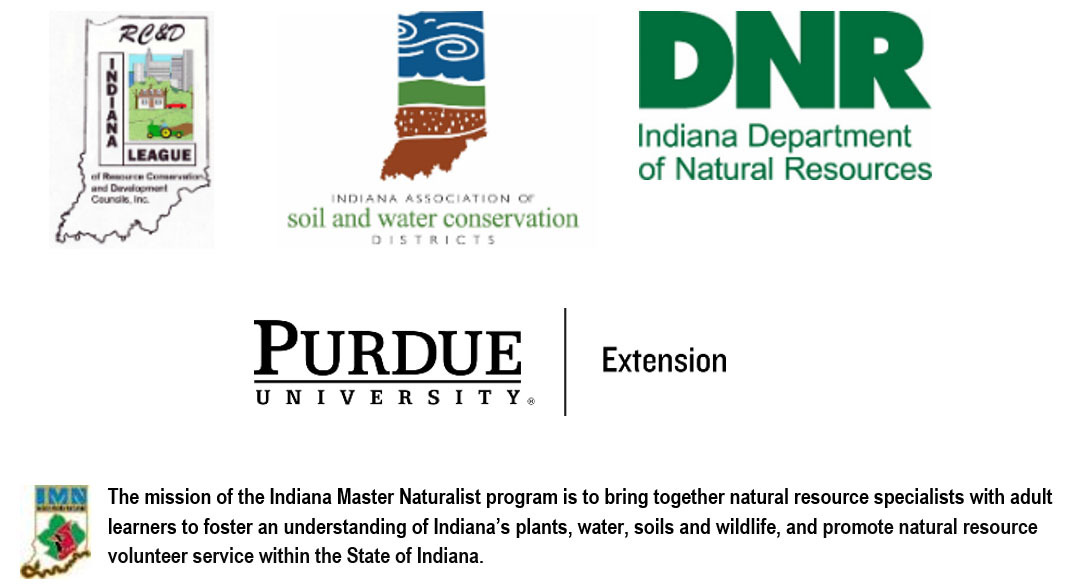
|